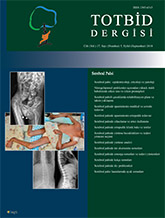
Hip problems are very important in cerebral palsy. They are usually diagnosed between ages 2 and 8. Spastic quadriparetic patients, and those with backward comorbidity according to the rough motor function scale are at risk. The lightest form is adduction and/or flexion contracture. In gen-eral, the femoral anteversion angles of these patients increase. Subluxation and dislocation can be observed. Migration index should be measured on the hip radiographs, and patients monitored according to this value. Soft tissue releasing operations, and femoral or acetabular osteotomies can be performed individually or in combination. However, most important point is that most of the hip problems can be avoided in spastic patients.